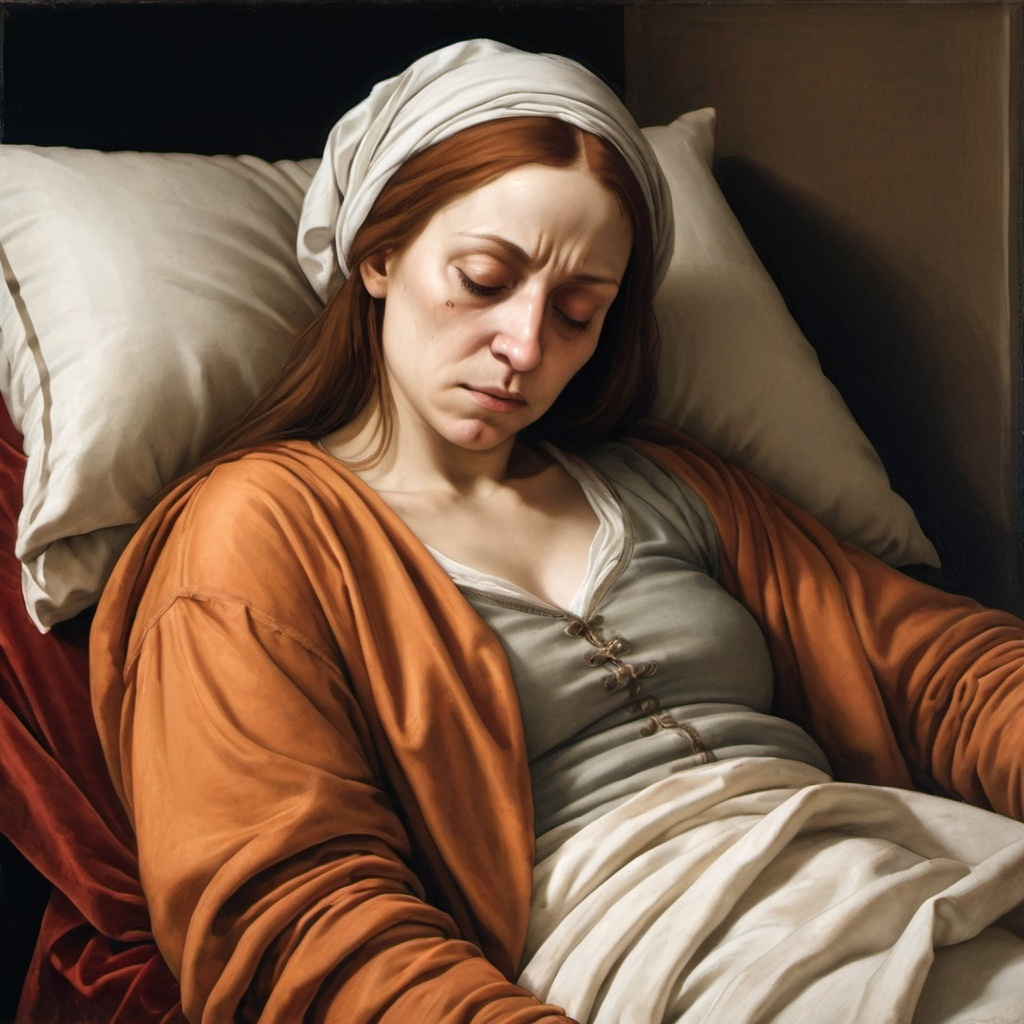
How Medieval People Treated Fevers? Jesus and fever history
The history of medicine is filled with fascinating stories of how different cultures approached illness and healing. Among these, the treatment of fevers during medieval times stands out for its combination of religious belief, natural remedies, and early medical practices. Fevers were a common affliction, and the way medieval people understood and treated them was deeply influenced by their faith, particularly their devotion to Jesus Christ. In this article, we will explore how fever was perceived in the medieval period, the role of religious practices in healing, and the various remedies employed by people of that time.
Understanding Fever in Medieval Times
In the medieval period, fever was not understood as we know it today. Modern medicine identifies fever as a symptom of an underlying condition, usually an infection or inflammation. However, in medieval times, fever was often seen as a disease in itself, and its causes were attributed to a variety of factors, including divine punishment, imbalance of the humors, and supernatural forces.
The Humoral Theory
One of the prevailing medical theories during the medieval period was the humoral theory, which originated from ancient Greek medicine. This theory posited that the human body was composed of four humors: blood, phlegm, black bile, and yellow bile. Health was believed to be a result of the proper balance of these humors, and illness, including fever, was thought to arise from their imbalance.
For example, an excess of yellow bile was often associated with a choleric temperament and could lead to fevers. Treatments, therefore, aimed at restoring the balance of the humors, often through methods such as bloodletting, purging, and the use of specific herbs.
Divine Punishment and Supernatural Causes
Beyond the humoral theory, fever was also frequently seen as a sign of divine displeasure. In a society where religion played a central role in everyday life, many believed that illness, including fever, was a punishment from God for sins. This belief was especially strong during times of widespread disease, such as the Black Death, where fever was a common and deadly symptom.
In addition to divine punishment, supernatural causes were also considered. Fever could be attributed to the influence of evil spirits or witchcraft. As a result, treatments often included religious rites, exorcisms, and other spiritual practices to combat these supernatural forces.
Renaissance Medicine and the Understanding of Fever
The Continued Influence of the Humoral Theory
While the Renaissance brought new ideas and discoveries, the humoral theory, which dominated medieval medicine, still played a crucial role in the understanding of fevers. According to this theory, a fever was seen as the result of an imbalance in the body’s four humors: blood, phlegm, black bile, and yellow bile. This imbalance caused an excess of heat, which manifested as a fever. Physicians of the time would often aim to restore this balance through various treatments.
Advancements in Anatomical Knowledge
One of the key developments during the Renaissance was the increased focus on anatomy. Pioneers like Andreas Vesalius began to challenge the long-standing reliance on Galenic anatomy, which had been based on animal dissection. Through human dissection, Vesalius and others provided more accurate depictions of the human body, leading to a better understanding of how the body functioned and how diseases affected it.
This growing anatomical knowledge began to influence the way fevers were understood. Rather than relying solely on humoral theory, physicians started to consider the physical structures of the body and how they might contribute to illness. However, it would still be some time before germ theory and the true causes of fevers were discovered.
Paracelsus and the Chemical Approach
Another significant figure in Renaissance medicine was Paracelsus, a Swiss physician and alchemist who rejected the traditional humoral theory. Paracelsus believed that disease, including fever, was caused by external agents—what we would now understand as toxins or infections—rather than by an imbalance of humors. He emphasized the use of chemical remedies to treat these conditions, laying the groundwork for modern pharmacology.
Paracelsus introduced the concept of using minerals and chemicals in medicine, advocating for treatments that targeted the specific causes of disease. His ideas represented a significant departure from the humoral theory and influenced the development of new approaches to treating fevers.
Religious Practices in Treating Fever
Given the strong belief in the divine and supernatural origins of illness, it is no surprise that religious practices were a central part of fever treatment in medieval times. Devotion to Jesus Christ, the Virgin Mary, and various saints played a significant role in the healing process.
Prayers and Pilgrimages
One of the most common practices for those suffering from fever was to seek divine intervention through prayer. People would pray to Jesus and the saints, asking for healing and relief from their suffering. The act of prayer was not only a plea for help but also a demonstration of faith and repentance.
Pilgrimages were another religious practice employed by those seeking a cure for fever. Many medieval Christians believed that visiting holy sites, such as the shrines of saints known for healing, could result in miraculous cures. The journey itself was seen as an act of penance, and the hope of divine intervention motivated many to undertake these often arduous trips.
Use of Relics and Holy Water
Relics, which were physical objects associated with Jesus, the Virgin Mary, or the saints, were also used in the treatment of fever. These could include pieces of clothing, bones, or other items believed to possess healing powers. People would touch these relics, wear them, or place them on the afflicted part of their body in the hope of being cured.
Holy water, which had been blessed by a priest, was another common remedy. It was believed to have purifying and healing properties, and people would drink it or sprinkle it on themselves as part of their treatment.
Medieval Remedies for Fever
While religious practices were central to medieval fever treatment, they were often accompanied by natural remedies and early medical practices. These remedies were based on a combination of the humoral theory, herbal medicine, and folk traditions.
Herbal Remedies
Herbal medicine was one of the most widely used methods for treating fever in the medieval period. Physicians and herbalists would prescribe various plants and herbs believed to have cooling or purging properties, which were thought to counteract the excess heat of a fever.
Some common herbs used to treat fever included:
- Willow Bark: Known for its pain-relieving properties, willow bark was often used to reduce fever and alleviate symptoms.
- Elderflower: Elderflower was believed to induce sweating, which was thought to help “sweat out” the fever.
- Meadowsweet: This herb was used to treat fevers and other inflammatory conditions, as it was believed to have cooling properties.
Bloodletting and Purging
In line with the humoral theory, bloodletting was a common practice for treating fever. The idea was that by removing a certain amount of blood, the balance of the humors could be restored, thus alleviating the fever. Bloodletting was often performed by a physician or barber-surgeon using a sharp instrument to make a small incision in the skin.
Purging, which involved the use of laxatives or emetics to cleanse the body, was another method used to treat fever. The goal was to expel the excess humors from the body, thereby restoring health.
Bathing and Cooling Treatments
Cooling the body was another approach to treating fever in medieval times. Cold baths, cool compresses, and the application of cold substances like vinegar were common methods used to reduce body temperature. These treatments were thought to counteract the heat associated with fever and provide relief to the patient.
The Role of Faith and Religion
Although the Renaissance was a period of growing scientific inquiry, religious beliefs continued to play a significant role in the treatment of illness. Many people still believed that fevers could be a sign of divine punishment or a test of faith. As a result, religious practices such as prayer, fasting, and pilgrimages were still used as part of the healing process.
Saints associated with healing, particularly those known for curing fevers, remained popular figures in Renaissance devotion. People would often pray to these saints for relief from their symptoms, reflecting the enduring influence of faith in medical practices.
The Role of Jesus and Saints in Healing
Throughout the medieval period, Jesus Christ was seen as the ultimate healer. His role in healing the sick was emphasized in religious texts, art, and practices. The belief that Jesus could cure any illness, including fever, was deeply ingrained in the medieval psyche.

Saints also played a crucial role in the healing process. Certain saints were believed to have specific powers to cure fevers. For example, Saint Apollonia was often invoked for relief from fever, and Saint Roch was considered a protector against the plague, which was frequently accompanied by fever.
Conclusion
The treatment of fever in medieval times was a complex interplay of religious belief, natural remedies, and early medical practices. The understanding of fever was deeply influenced by the humoral theory and the belief in divine punishment, leading to a wide range of treatments that combined spiritual and physical approaches.
Religious practices, including prayers, pilgrimages, and the use of relics, were central to the treatment process, reflecting the profound faith of medieval people in the healing power of Jesus and the saints. At the same time, natural remedies, such as herbal medicine and bloodletting, were employed to restore the balance of the humors and reduce the symptoms of fever.
While these methods may seem primitive by modern standards, they were an important part of the medieval worldview and represent the early stages of medical practice in the Western world.
